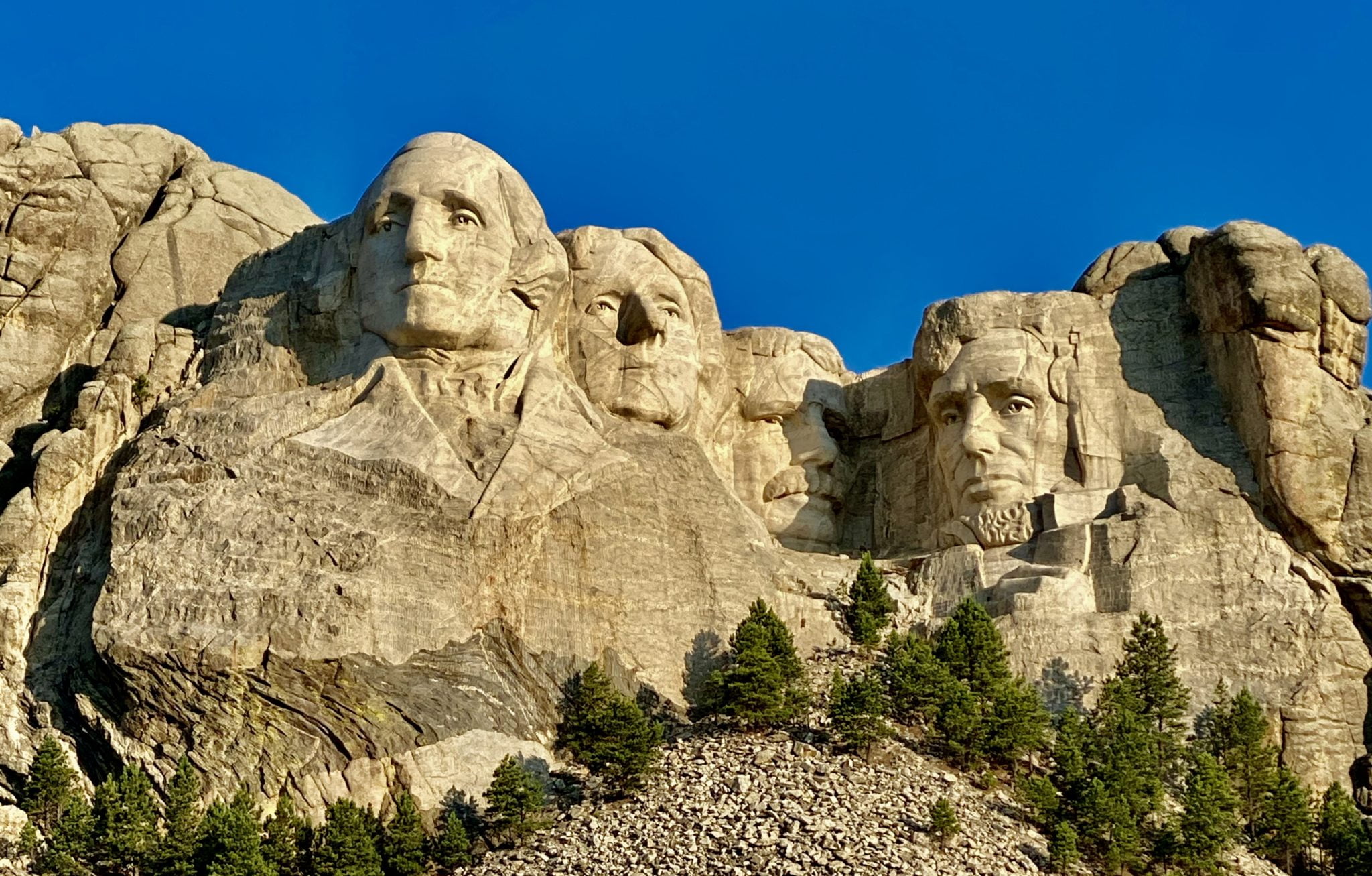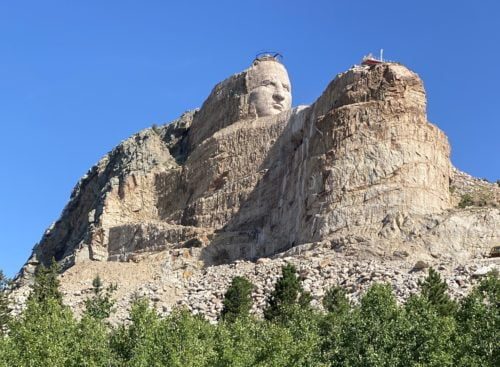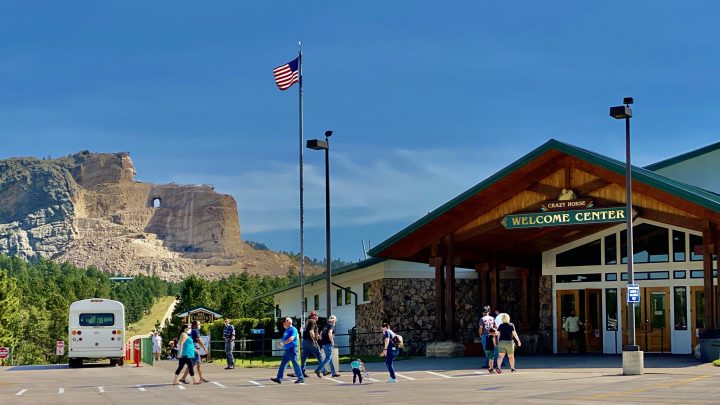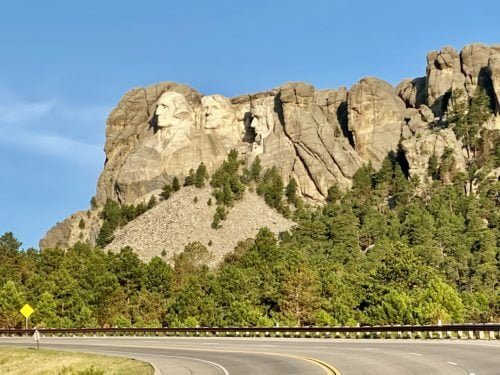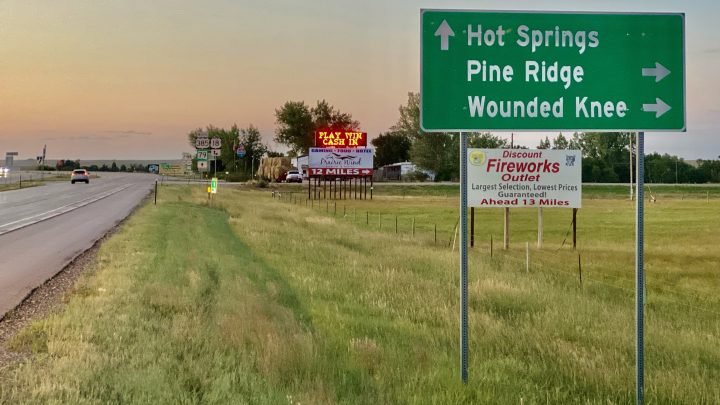Editor’s note: A previous version of this story ran on Lubbock Lights on August 7, 2020
Mount Rushmore National Memorial has long been a bucket list thing for me. Those lists, allegedly compiled by people of a certain age, were in reality chiseled in stone decades ago by the dedicated work of elementary school social studies teachers, with the final flourishes applied in senior civics class and by a myriad of librarians and other educators in between.
After nearly half a year of Covid-19, compounded with the cultural devolution happening across the country, I shouldn’t have to explain what it was that moved me in early August of 2020 to make a solitary drive to Mount Rushmore.
I didn’t know why, but I knew I had to go. But even then, I did not anticipate Mount Rushmore was about to become my American pilgrimage.
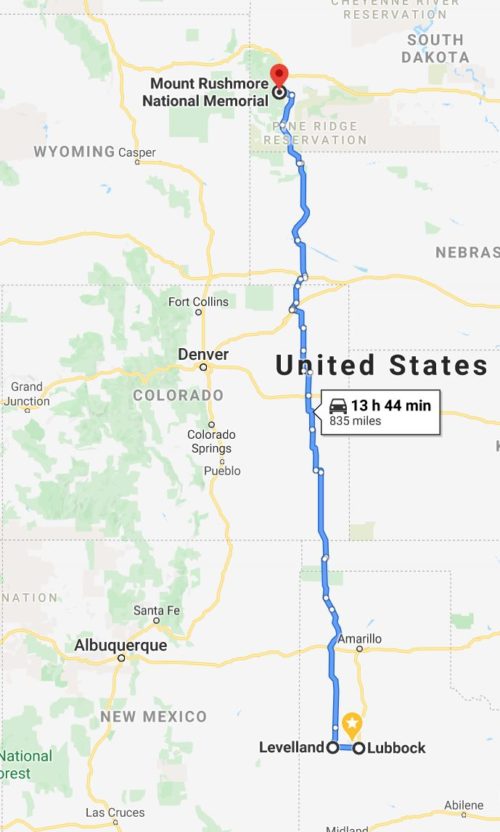
The first surprise was the discovery that Mount Rushmore is just up the road.
Really.
Simply drive to Levelland and turn north on U.S. Highway 385, which begins at Big Bend, Texas in the south and terminates at Deadwood, South Dakota on its north end.
Keep straight through the cornfields and stay on Highway 385 until you reach the Black Hills then turn left on Mount Rushmore Highway. The destination is on your right.
And unless you cheat and take the I-27 shortcut through Amarillo, maybe saving ten minutes, you’ll drive precisely one mile of interstate on this 835-mile trip. Dalhart is the last “big city” you’ll see so keep the gas gauge above 1/4 tank.
It is a soul restoring journey right through the heart of America in five states. And largely uncontaminated by interstate highways, strip shopping centers or endless fast-food restaurants.
Make the trek on a weekend and the traffic is light but most of the local eateries will be closed; drive it on a weekday and look for the places where all the pickups are parked. It’s friendly driving; not a road race. Plan to travel at a leisurely pace and allow a little extra time for the grain trucks. The road belongs to the commerce that paves it.
For most of the trip, you may as well be driving through the rolling plains of the Panhandle of Texas. If you wonder what is the number-one crop in the United States, you’ll have no doubt it’s corn after this expedition. The road to Rushmore is a two-lane highway through millions and millions of acres of corn, interspersed with wheat and pasture. It’s miles of verdant farmland. Until you get to the Black Hills, you’ll never be more than 45 minutes from a John Deere dealership.
Leave early enough, and you can drive straight to the park just in time for the lighting ceremony. Check the calendar for the dates you plan to visit. The memorial is a photographic bonanza, but it’s not necessary to get fancy. Every photo in this story was taken with an iPhone in 2020.
Slideshow: It’s a photographic bonanza but you don’t have to get fancy; all of these photos, including the top one, were taken with an iPhone.
If you don’t do the lighting ceremony first, you’re still in for a treat by making your first visit early in the morning. For a boy raised on the flag, the Constitution and American history, it is an experience akin to going to church. At 7 a.m. there are only a handful of visitors and those in attendance are willing to allow the memorial the reverence it merits at that time of day.
In this gigantic outdoor cathedral one may commune with nature as well with George and Abe and thank the God and Father who created all for the blessings of this nation. The mornings also afford more privacy if you, like me, cannot control your tears at its majesty and the history it represents.
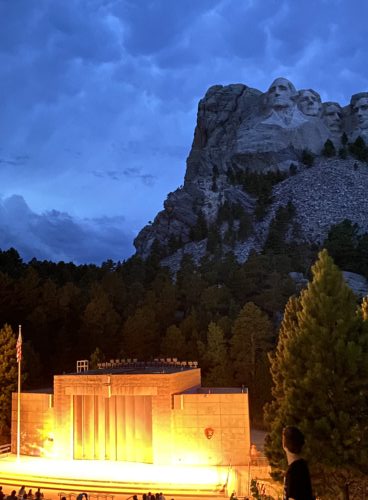
It’s hard not to make it all about George, but in many ways, Mount Rushmore is all about George. As the father of our nation, his is the prominent position. And only George was given the hint of what might have been had the designer’s vision been completely realized.
On Washington’s extreme left, Abraham Lincoln’s sad eyes seek you out no matter where you stand.
Theodore Roosevelt, as the latecomer, lingers appropriately in the background but if you stop at the pull-out on the road from Keystone it is Roosevelt who looks directly at you.
Thomas Jefferson stares into the distance over Washington’s left shoulder. It is Jefferson, author of the Declaration of Independence, who seems least engaged with us. Unlike the other presidents, from no vantage point does it seem that Jefferson meets our gaze. Or, perhaps more than the other three, we have not met his.
It’s the kind of place to experience, leave, and come back and experience again later in the day or at night. It changes through the day. When it was the most crowded, I sat and watched for an hour. Thousands had made this same pilgrimage and most for similar reasons. I was among Americans. Americans of every age, color and ethnicity and we were gathered in the same place with purpose. These are my people, and we are defined by what we choose to love, honor and remember.
And all it costs is to park! Your parking ticket is your family pass to the memorial, and, except for TJ’s (Thomas Jefferson) ice cream, a mandatory treat that rivals anything Ben & Jerry can produce, $10 is all it will cost you no matter how many times you return.
The closest town for lodging is Keystone. It’s a fun little town and you’ll want to spend at least one night in the area.
Fewer than 30 minutes away is the Crazy Horse Memorial. It is a work in progress, but just as memorable and educational a trip as Mount Rushmore. It costs a little more, because the North American Indians refuse government subsidy, knowing the true price of “government assistance,” but it’s worth twice the price of admission. These aren’t competing monuments and they do not try to be, but they are conveniently proximate and each tells its own story. To see Rushmore and miss Crazy Horse squanders an opportunity for firsthand cultural and historical enrichment.
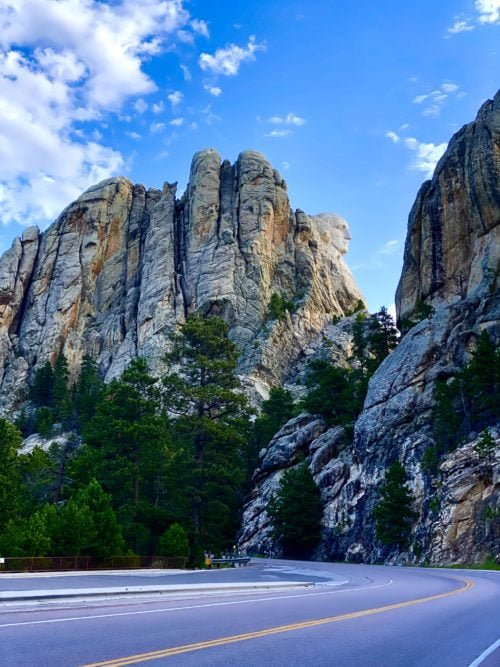
Ironically, it was at the Crazy Horse Memorial I discovered the message that was the Holy Grail of my crusade. I found it in the words of one of the members of the first great immigration to this country, Chief Henry Standing Bear.
Henry Standing Bear was one of the Sioux leaders who envisioned the Crazy Horse Memorial, “My fellow chiefs and I would like the white man to know that the red man has great heroes, too,” he wrote in 1939.
Chief Standing Bear spoke wisely. It is the right of each to choose his heroes. And heroines. There is a lot to be learned about ourselves and our cultures from those choices.
I learned the most at the Crazy Horse Memorial. Now educated, I can embrace why Crazy Horse, Lakota war leader of the Oglala band, was that combination of generosity, endurance and fierce warrior the Sioux chose to memorialize. He is a hero.
For good and for ill, monuments are reminders, and no better or worse than the history and lessons we attach to them.
You get to choose your heroes.
But remember, please, you don’t get to choose mine.
Footnote: If you plan a trip remember that Sturgis, South Dakota is only an hour away from Mount Rushmore and the Sturgis Motorcycle Rally is August 1-11. Plan your trip around your comfort level with lots of motorcycles on the road and in Keystone. I planned ignorant of it and had no issues or regrets. Sturgis attendees are mostly my neighbors on bikes.
Coming soon, we will offer a weekly newsletter to highlight our work. Use the form below so you don’t miss a thing.

